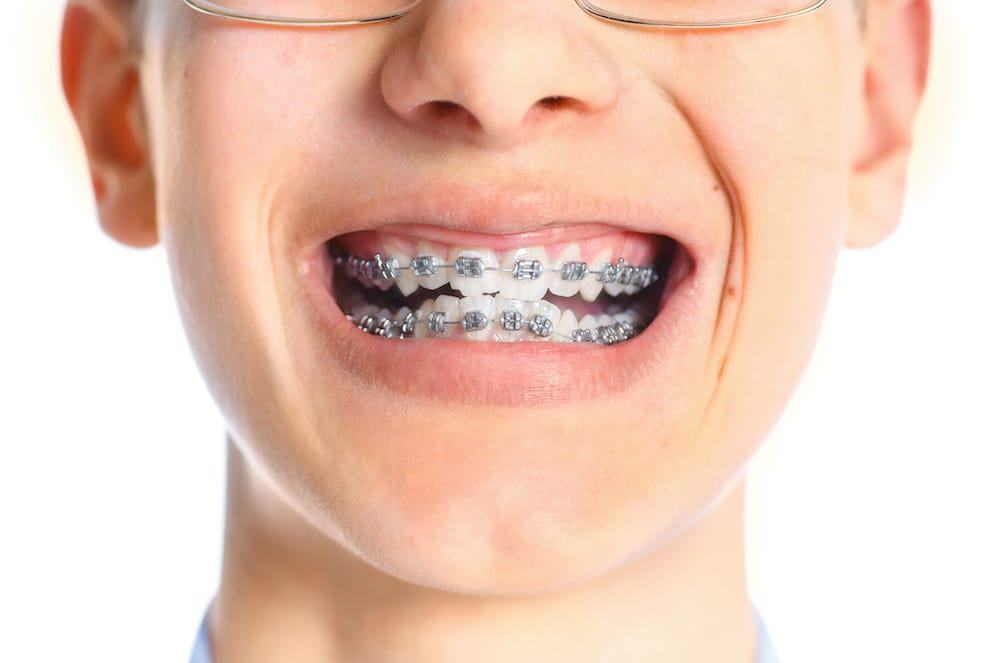Orthodontics is a practice within the field of dentistry that seeks to fix irregularities of crooked teeth and poor bite in the mouth. Braces, plastic moulds, plates and surgery are all tools of the orthodontic trade. Orthodontic treatment can be used to fix irregularities that cause physical as well as aesthetic problems, including: overcrowding, problems with the bite (over or under bite) that can lead to further problems, and aesthetic problems like crooked teeth or large gaps between teeth.
is a practice within the field of dentistry that seeks to fix irregularities of crooked teeth and poor bite in the mouth. Braces, plastic moulds, plates and surgery are all tools of the orthodontic trade. Orthodontic treatment can be used to fix irregularities that cause physical as well as aesthetic problems, including: overcrowding, problems with the bite (over or under bite) that can lead to further problems, and aesthetic problems like crooked teeth or large gaps between teeth.
To help you better understand the field of orthodontics, we’ve put together a few considerations to keep in mind when researching orthodontic treatment.
Orthodontics and Age
While it is best to receive orthodontic treatment during adolescence, adults can still use orthodontic treatments to fix dental or aesthetic problems.
Early Orthodontic Treatment
Children can start receiving orthodontic treatments from the age of about seven. Orthodontic treatment in early-aged children (aged between seven and nine years old) is often aimed at changing the formation of jaw and mouth bones.
Orthodontic treatment at this stage is called interceptive orthodontics because it intervenes in the process of irregular bone growth, meaning there will be a lesser chance of the child having dental problems later on in life. Treatment at this stage is also far less painful as the bones are still soft.
For example, the insertion of a palatal expander in a seven year old may lessen the chances of that child needing braces during their teenage years as the upper jaw will have been expanded enough to make room for their adult teeth and the pliability of the bones means that apart from initial discomfort the whole process will be relatively pain free.
Teenage Orthodontic Treatment
Orthodontic treatment during the teenage years will usually commence after all the baby teeth have fallen out. Treatment at this stage of development can still be very effective as the bones are still not fully formed and set. Orthodontics at this stage will often be used to address problems like crowding of the teeth or to correct any aesthetic issues that could affect the child’s confidence.
Adult Orthodontic Treatment
More and more adults are looking towards orthodontics to fix problems with their teeth. Obviously, by adulthood the bones of the jaw and mouth are set meaning that treatment can often be more complicated and uncomfortable.
Although, modern techniques have gone a long way in making adult orthodontics a far more attractive option in modern forms of braces such as lingual braces or Invisalign also mean that patients can correct their smile without having visible braces. Surgery may often be used in combination with orthodontics to fix more complicated problems.
How Does It Work?
Broadly, orthodontics work by applying light, constant pressure in order to move teeth through the bones of the jaw and mouth. When explained like that, it sounds like a method of torture, but in reality teeth are much harder than bone. So, when the teeth begin to move the bone dissolves and reshapes and remoulds itself around the new space the tooth has made for itself.
The process of dissolving and reforming is much easier during adolescence because the bones are softer and more pliable, meaning the breakdown process is easier and the reformation happens more quickly.
The actual technology that allows this process to happen varies according to the method employed. Traditional wire braces and plates use something called ‘memory’ wire, which means the wire is bent to fit the teeth but as the wire goes back to its original shape the teeth are moved along with it. Plastic moulds, such as Invisalign and other types of guards place pressure on the teeth forcing the teeth to move into the shape that has been set by the mould. A series of custom moulds will be created and these moulds will be worn in succession until the desired shape has been reached, sometimes a night-guard will continue to be used for some time in order to maintain the new shape.
So, no matter what age you are orthodontics could be the answer to your dental problem. If you’re a parent, regular trips to the dentist could mean that your child gets interceptive orthodontic treatment that can save them from more obtrusive treatments later in life. This doesn’t mean that adults should feel apprehensive about seeking out orthodontic treatment. Technology in the orthodontics field has come a long way meaning that adult orthodontic treatments have become a viable and far less painful and intrusive option for patients.
CARE DENTAL CAMBERWELL PROTECTING YOUR TEETH THIS AFL SEASON
Contacting Camberwell Dental team couldn’t be easier.

